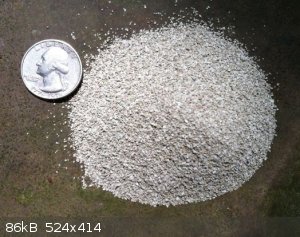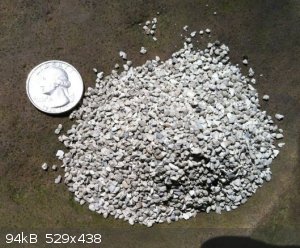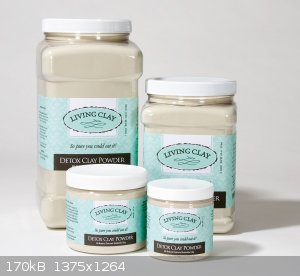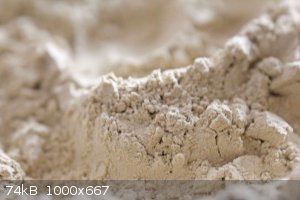
RogueRose - 23-12-2015 at 00:57
After reading another users comments on using Fuller's earth (now referred to a FE), which is very similar to clay, as a filtering and bleaching
material for oils, I've tried to find information on how it is used, but most of what I found is cartridge and filtration systems that use it, with no
specific details concerning amounts needed, particle size, etc.
I've been told that heating the oil with FE with oil will remove contaminants but I am not sure the quantity or ratio needed or amount of time. I'm
guessing this stuff acts similar to activated carbon and might be used similarly?
What I need to do is clean up some fats and oils from various sources such as tallow, lard & plant oils. Most are from processing from their
native state (fat or kernel processing) but some may be oils being cleaned after some use. I'm also interested in other application of this material
and how it can be applied so I'll be playing with that as well.
So from what I see there are two possibilities to use this stuff as a filtering material - Open pot filtering & pressurized filter tube.
Open Pot filtering
In a large pot/pan place X amount FE in maybe 8X volume of heated oil and mix/stir for maybe 30-60 mins. Pour into heat resistant storage container
& place in oven on warm to allow FE to settle to bottom as much as possible. The problem is removing any fine particulate from the settled oil
and then removing any oil from the FE (or just add FE/Oil layer to next batch to filter)
Positive Pressure Filtering
I am considering building a filter tube out of PVC pipe with a 3/8" in/output nozzle (on each end) with a polyester or cotton filter on either side of
the nozzle holding the FE in between. I have had success with the same setup using charcoal to filter water. The thing is I don't know how oil or FE
acts in a situation like this (such as will a "path" be formed where most oil flows or will it flow evenly across all medium as is the case with
water). How do I handle viscosity issues as my oil solidifies at room temp.
I was thinking of adding 1/4" copper tubing inside the filter tubing in a spiral form and pump near boiling water through it. This should negate any
viscosity issues and reactivate the filter after storage (melt solidified oils inside).
I plan on using positive pressure in a pressure tank connected to a holding vessel, for the oils to be filtered. I know with carbon that the smaller
the aggregate size the more pressure needed to filter (when dealing with water). I don't know if oil and FE will act the same way and if so, how much
more resistance as the grain size decreases.
I would assume that the smaller the grain size, the more surface area and less material needed to filter but what about the longevity of the filter
(time before FE needs replaced). I found these two pics of FE size but I also have seen this stuff as a dust or fine sand texture (which would
probably work well with the open pot method)


So, if anyone has any suggestions on how this should be used, which method would be best and most importantly physical attributes of the FE (size/mesh
for application).
Eddygp - 23-12-2015 at 02:33
I'll leave my tuppence worth here that will only partly solve one of your minor problems.
NOTE: I did not read about the PVC filter until after writing the next paragraph... are you not going to use a glass one for a particular reason or is
it down to resources? If you can use glass and there is no major problem that I missed, you can follow the next step:
To avoid crystallisation of your oils, you can go for a hot filtration by preheating the filter (and if possible, using one of those typical broken
ones that only have the upper section to prevent the oil from crystallising onto the long part).
Is there any reason why positive pressure filtering would work better than vacuum filtration in this case? Just curious.
As for the particles, a thin mesh would definitely be more efficient (disclaimer: my experience with activated charcoal and the sort is quite
limited... take this with a grain of salt) and the fact that you use less for the extraction will probably account for its shorter longevity.
Regardless, wait for someone else to comment on this since I'm not sure.
Praxichys - 23-12-2015 at 06:52
What is the planned diameter of the filter column? If you made it from copper you could wrap the copper column with a tape heater. You could also try
building a jacketed column and circulate hot water through the jacket to keep the contents of the filter hot. This would require more expense in
copper though, but is similar to your boiling water/copper coil idea. I wouldn't recommend PVC since it gets pretty soft at boiling water temperatures
and might balloon under the pressure. CPVC has a higher softening point and would work better if you can get your hands on it.
RogueRose - 24-12-2015 at 18:25
Thanks for the suggestion on the CPVC as it looks like a much better choice than PVC because of the temperature properties. I also think copper may
be better as I can heat it from the outside, being more conductive.
As far as the FE, I'm trying to figure out what mesh size is best for this process. I was reading the wiki on FE and they mentioned that it is often
used as dust in movie sets. IDK if it is possible to force an oil through a filter filled with dust.
I chose positive pressure because it is what I have to work with. I have never had very good success with vacuum filtration, largely due to not being
able to pull a high enough vacuum (and maintain it). I can use either an air compressor or water pressure (tap water) to do positive pressure
filtering.
AJKOER - 25-12-2015 at 06:01
Some success in an aqueous setting using a centrifuge. Here is a reference (link: http://www.sigmaaldrich.com/technical-documents/articles/bio... ), to quote:
"The simplest form of separation by centrifugation is differential centrifugation, sometimes called differential pelleting (see Figure 1). Particles
of different densities or sizes in a suspension will sediment at different rates, with the larger and denser particles sedimenting faster. These
sedimentation rates can be increased by using centrifugal force. A suspension of cells subjected to a series of increasing centrifugal force cycles
will yield a series of pellets containing cells of decreasing sedimentation rate. - See more at: http://www.sigmaaldrich.com/technical-documents/articles/bio... "
You may also may be able to design a filter setup using the centrifugal force to force your suspension through Fuller's Earth.
[Edited on 25-12-2015 by AJKOER]
RogueRose - 9-1-2016 at 01:45
I like the idea of the centrifugal force to expel the remaining oil. I'll have to look into the feasibility of this.
I did find something very important in my research of this material - it seems that I was very wrong in my understanding of what exactly FE was/is.
IDK if it was recently updated or if I missed this important info the first time through.
"Fuller's earth is any clay material that has the capability to de-colorize oil or other liquids without chemical
treatment.[1] Fuller's earth typically consists of palygorskite (attapulgite) or Bentonite." - Quote from
wiki - first paragraph of "Fullers Earth"
It seems that FE contains some or all of the following with Bentonite (wiki states calcium being the one used) being the primary component. They all
seem to be some kind of aluminum clay substance. Kaolin is also a type of clay. Calcite, dolomite, and quartz are also found in small amounts in
some FE samples
Bentonites (which kind - K, Na, Ca, Al - what??) - an aluminium phyllosilicate clay consisting mostly of montmorillonite
Montmorillonite
Kaolinite (kaolin) - Al2Si2O5(OH)4 - type of clay
Palygorskite (attapulgite) - magnesium aluminium phyllosilicate
Possibly present:
Calcite
Dolomite
Quartz
All the samples I have seen for sale of the Cal Ben & the FE are a light tan color and look remarkably similar.
Calcium Bentonite:

Fullers Earth on Ebay

The site I found that gave info about FE said that the powder retained about 30% of the oil that was filtered. This makes little sense IMO. If I run
10L through a 200cc filter, is it going to retain 3L of oil or are they saying that in the 200cc filter, 30% oil will remain, adding 60ml of oil in
the now filled filter - this make sense to me. But if the open pot method is used and 2lb is added to 10L of oil
Note on the FE "supplement/cosmetic product industry"
I finally found some sites that discuss FE (also called Bleaching Earth) and also sell it. IMO the entire product "industry" (or product specialty)
of FE is very shady and questionable with regards to potential false claims and such. The main reason is due to lack of US suppliers in much quantity
or selection (there are some, but very few, and many have few products). Next is price - $15-20 for 2 oz, or $8.99 for 15 grams (for micrograin size
- cosmetic grade)!!! I think I found about 4 suppliers and they were all Amazon or Ebay - which is odd IMHO. There are industrial manufacturers that
make filter cartridges, but those are very specialized and small in quantity as well.
Anyway, I'm going to try some Cal Bent and Kaolin (& some other additives if necessary).
phlogiston - 9-1-2016 at 08:28
I successfully used your open pot method to decolorize a few liters of paraffin candle wax with bentonite-based kitty litter. The wax had a red
pigment in it. The bentonite absorbed the pigment pretty quickly (a matter of minutes) and I then just scooped the colored clay out with a perforated
cooking spatula. It took several addditions to absorb all the pigment, about a kg in total to decolorize approx 2.5 liters of paraffin.
feacetech - 11-1-2016 at 13:00
I use to use bleaching earth to bleach green tallow as a chemical test
the bleaching earth was a fine white to off grey sand material
I used ~100g per 300g of tallow for the test
mixed (500 rpm) and heated for 45mins at 115C open stainless jug in a paraffin bath
I would then filter some of it after wards to measure colour
I would be left with a really black sludge in the bottom of the jug
